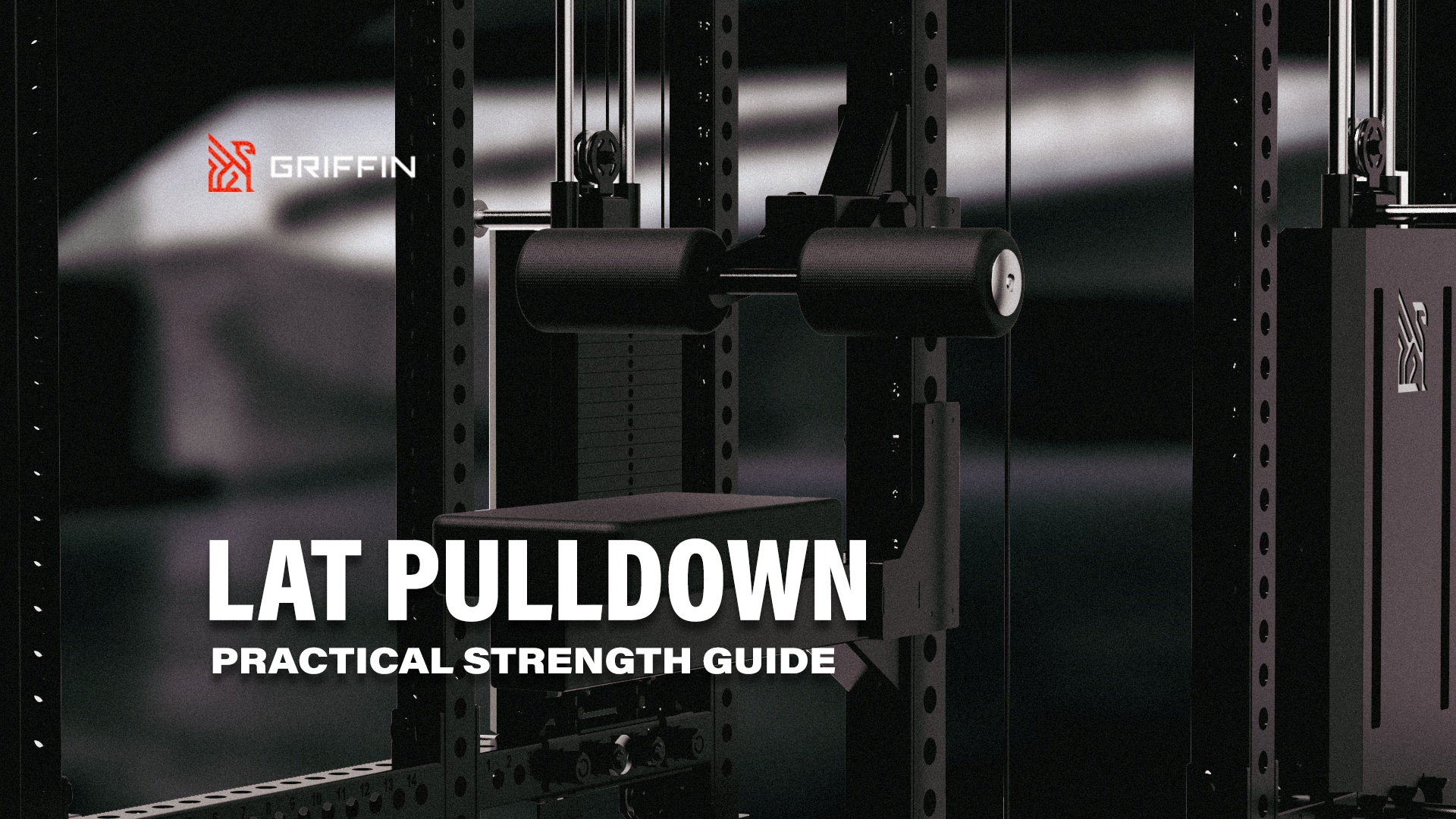What’s a Good Lat Pulldown Weight?
Whether you train at home or in the gym, the lat pulldown is a staple back exercise. But one question comes up again and again:
“How much should I be able to lat pulldown?”
There’s no one-size-fits-all answer. Your ideal weight depends on your body weight, training level, and goals. But this guide will give you realistic standards, progression tips, and gear suggestions to help you improve.
Why Lat Pulldown Strength Matters
The lat pulldown targets your:
- Lats (latissimus dorsi)
- Biceps
- Rhomboids
- Rear delts
- Grip and forearms
It’s also a great substitute or progression tool for pull-ups.
If you’re working toward your first pull-up, getting stronger on the lat pulldown is one of the best places to start.
General Strength Standards (By Experience Level)
Let’s start with rough benchmarks. These are not hard rules, but good reference points based on population averages.
For Men (Lat Pulldown – Both Arms):
- Beginner: 0.5× bodyweight
- Novice: 0.75× bodyweight
- Intermediate: 1.0× bodyweight
- Advanced: 1.5× bodyweight
- Elite: 1.75× bodyweight
For Women:
- Beginner: 0.3× bodyweight
- Novice: 0.45× bodyweight
- Intermediate: 0.7× bodyweight
- Advanced: 0.95× bodyweight
- Elite: 1.3× bodyweight
Example: A 160 lb male at the intermediate level should aim to pulldown around 160 lbs for 1 rep.
These numbers are based on estimates from strength-focused platforms like StrengthLevel and Fitness Volt.
How Much Weight Should You Start With?
If you’re new to lat pulldowns, use a weight that lets you complete 10–15 reps with good form—but feels challenging by the last few reps.
- You should feel the burn in your lats and upper back—not your arms or traps.
- Don’t lean back or swing the weight—if you’re doing that, it’s too heavy.
Start light. Focus on perfect reps. Progress over time.
How to Increase Your Lat Pulldown Strength
Here are four ways to boost your pulldown numbers over time:
1. Train 2–3x Per Week
Frequency builds familiarity and technique. Pair with rows and other pulling variations.
2. Use Progressive Overload
Add weight or reps every 1–2 weeks. Even small jumps add up.
3. Add Pull-Up Progressions
Inverted rows, band-assisted pull-ups, and negatives all build vertical pulling strength.
4. Strengthen Your Grip
Use Farmer’s Carries or dead hangs to improve your ability to hold the bar and control the weight.
Once you’re able to lat pulldown your bodyweight for reps, you’re likely ready for unassisted pull-ups.
The Best Home Setup for Lat Pulldowns
Training at home? You don’t need a full cable tower. Griffin Fitness offers clean, compact setups that let you do pulldowns, rows, and more without giving up space.
Recommended Gear:
| Equipment | Why It Helps |
|---|---|
| Talon Cable System | Complete lat pulldown & low row solution that mounts to your GR3 rack |
| GR3 Power Rack | Foundation for the Talon and all your strength work |
| Adjustable Bench 2.0 | Use for seated rows or cable face pulls |
| Lat Pulldown Seat | Optional add-on for better leverage and positioning during pulldowns |
Bottom Line
There’s no perfect number. But if you’re hitting somewhere between 0.75x to 1.25x your bodyweight with control and full range, you’re in a strong spot—and on track for even bigger lifts.
Work your way up, stay consistent, and don’t forget: it’s not about chasing numbers—it’s about getting stronger with good form.
